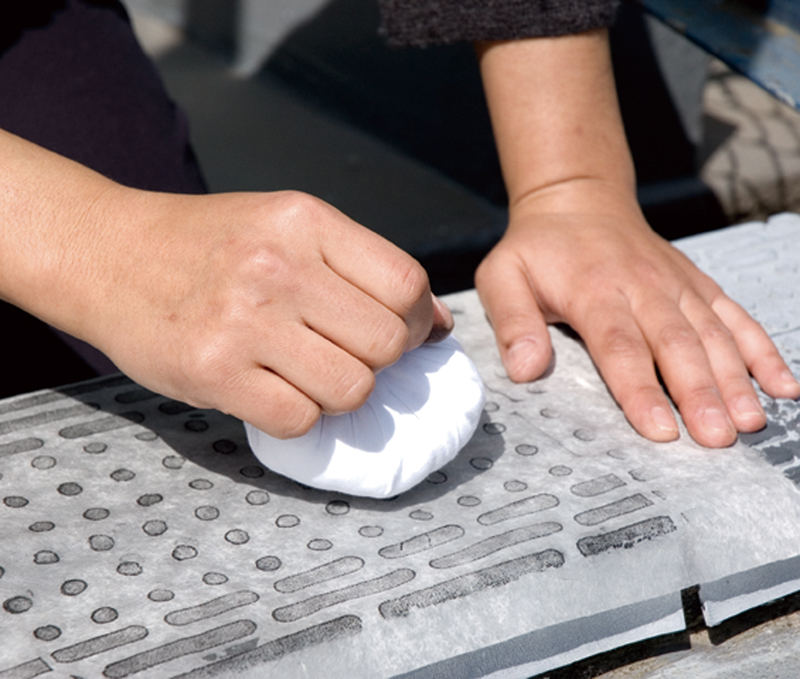Takuzuri Rubbing
拓刷り(拓摺り)
Takuzuri
CATEGORIES
Takuzuri rubbing is one of the techniques of letterpress printing (toppan). It is a rubbing-printing method that involves transferring the patterns (monyō) and designs (zugara) on the protruding sections onto paper by applying the paper to the engraved objects or the uneven objects (the intended surface) and then directly rubbing withpressing down the drawing materials from above.
The history of takuzuri rubbing is long. The so-called takuhon (ink rubbing)—which made books by transcribing onto paper the protruding shapes from the scripts of sutras engraved on stone monuments, wood, metals, and earthenware—has existed for ages. Indeed, it can be said that takuzuri rubbing is the method that applies this takuhon method to block prints. Normal block-print plate types such as the planograph (heihan), the letterpress (toppan), the intaglio (ōhan), and the mimeograph (kōhan) transcribe to paper by applying ink directly to the block and then adding pressure. In contrast, takuzuri rubbing is characterized by not inverting the image, as it presses the drawing materials against the plate-fastened paper without applying the ink directly to the plate surface.
There are two methods of takuzuri rubbing: the dry method (kantaku) and the wet method (shittaku). The dry method, also referred to as “frottage,” involves applying dried paper to the block and copying the patterns and designs of the protruding sections to the paper by rubbing the drawing materials on the block from above. Because the copied tones and expressions vary depending on the thickness and type of the paper and the kinds of drawing materials being used, artists can produce a variety of expressions with the same block. The wet method of takuzuri rubbing, meanwhile, involves spraying a mist onto paper to give it moisture, thereby fastening the moistened paper to the plate’s contours in advance. The artist then applies the Indian ink and oil-based ink to the tanpo (a tool of rounded cloth) and transfers the patterns and designs of the protruding sections by pressing against them forcefully. In wet-type rubbing, thin traditional Japanese paper (washi) is ideal, as it would be difficult to fasten thick paper tightly to the object. Moreover, if the artist applies too much moisture to the paper, the paper will rip; if he or she does not apply enough moisture, however, an appropriate amount of water needs to be added to prevent the paper from sticking too tightly.
In takuzuri rubbing, the selection of the target object for the intended surface is very important because the shape of the object immediately becomes the image. In the realm of takuzuri rubbing, artists can employ a variety of drawing materials for the same target object, produce intricate expressions using overlapping patterns by making repeated rubbings, and use rubbings for collage materials and sources for the block prints. In short, the method has a wide array of applications.
 Dry method (kantaku)
Dry method (kantaku) Wet method (shittaku)
Wet method (shittaku)
